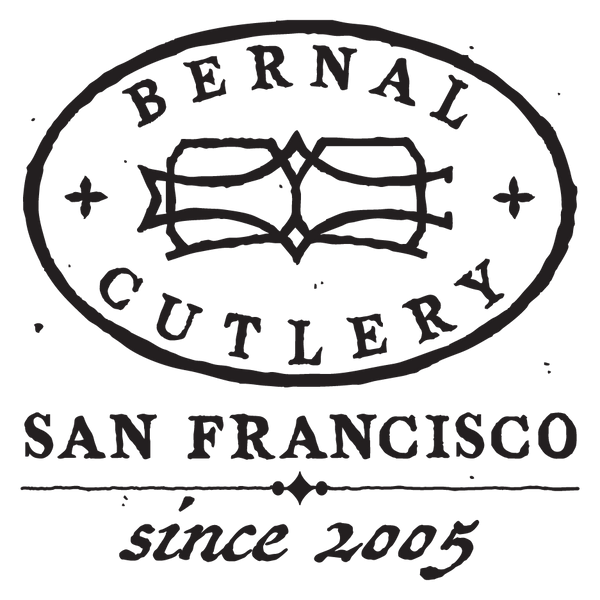Please read our message regarding changes regarding tariff impacts. Changes go into effect Wednesday Oct 22.
-
Language
-
Currency
-
NEW
- All New Products
- New Kitchen Knives
- New Kitchen Tools
- Latest Vintage
- New Pocket & Outdoor
- New Pantry
-
What's in my Basket Series
- Nite Yun - Lunette
- Scott & Frost Clark - Dad's Luncheonette, Chef & Author
- Angela Wilson - Avedano's
- Susan Kim - Eat Doshi
- Seth Stowaway - Osito
- Dr. Harold McGee - Author
- Ryo Sakai -Kuma Sushi
- Ian McNemar - Woodworker, Instructor
- Anna Voloshyna - Author
- Jorge Martinex Lillard - Lolo´
- Chris Yang - Piglet & Co
- Griffin Wilson - @cabincorn
- Gabe Rudolph - Gestura Utensils
- Molly DeCoudreaux - Food Photographer
- Geoff Davis - Burdell Soul Food
- Jen and Wes - @crazythickasians
- Josh Donald - Bernal Cutlery
- Kelly Kozak - Bernal Cutlery
- Jessica Sullivan - Poppy SF
- Sylvan Mishima Brackett - Rintaro
- Michael Myers - Film Character
- Ali Hooke - @alihooke
- Bruce Hill - The Chef's Press
- Dylan Carasco - Butcher's Guide
- Spencer Horowitz - Hadeem
-
Japanese Knives
- Ashi Hamono
- Gihei Knives
- Godo Tadaharu
- Hatsukokoro
- Hitohira
- Iwasaki Kamisori
- Kaji-Bei
- Kamo Shiro
- Kanehide
- Konosuke
- MAC Knife
- Masakane
- Makoto Tadokoro Marushin
- Morihei
- Myojin Riki Sesakusho
- Nakagawa Hamono
- Naozumi
- Nigara Hamono
- Sakai Kikumori
- Shigefusa
- Tagai
- Takada no Hamono
- Tanabe Tatara
- Tosa
- Tsukasa Hinoura
- Yoshikane
- Yoshikazu Tanaka
- Wakui
-
Global Knives
- Allday Goods (GBR)
- Alma Knife Co. (USA)
- Astral Works (USA)
- Au Sabot (FRA)
- AZ Knives (ARG)
- Benchmade Cutlery (USA)
- Bernal Cutlery (USA)
- Blenheim Forge (GBR)
- Chazeau Honoré (FRA)
- Dexter Russell (USA)
- Eichenlaub Tableware (DEU)
- Florentine Kitchen Knives (ESP)
- Fontenille Pataud (FRA)
- Friedr Herder (DEU)
- J Adams (GBR)
- John Nowill & Son (GBR)
- K Sabatier (FRA)
- Pallares (ESP)
- Roland Lannier (FRA)
- Rolin Knives (USA)
- Silverthorn (USA)
- Steelport Knife Co. (USA)
- Windmühlenmesser (DEU)
- Zirh (TUR)
-
Styles
- Bernal Cutlery Collaborations
- Knife Sets
- Japanese Kitchen Knives
- Western Kitchen Knives
- Chinese Style Cleavers
- Bread
- Butchery
- Cheese | Charcuterie
- Pocket | Folding
-
Outdoor
- A Wright & Son (GBR)
- Au Sabot Folders (FRA)
- Benchmade (USA)
- Buck Knives (USA)
- David Margrita (FRA)
- Friedr Herder (DEU)
- Fontenille Pataud (FRA)
- Helle (NOR)
- Higonokami
- Hults Bruk Axes (SWE)
- Ibberson (GBR)
- Joseph Rogers & Sons (GBR)
- Kalthoff Axes (SWE)
- MOKI Knives (JPN)
- Morakniv (SWE)
- Opinel (FRA)
- Pallares (ESP)
- Tactile Knife Company (USA)
- Wood Tools (GBR)
- Vintage & New Vintage
- Woodworking | Hobby | Craft
- Kamisori Razors
- Carving Forks | Knives | Sets
- Table | Steak
- Fixed Blades | Axes | Outdoor Tools
- Scissors | Shears | Snips
- Left Handed
- Vintage
- Sharpening
- Kitchen | Cookware
- Tableware | Service
- Pantry
- Accessories
- Deals
- Gift Cards
- INFO
or
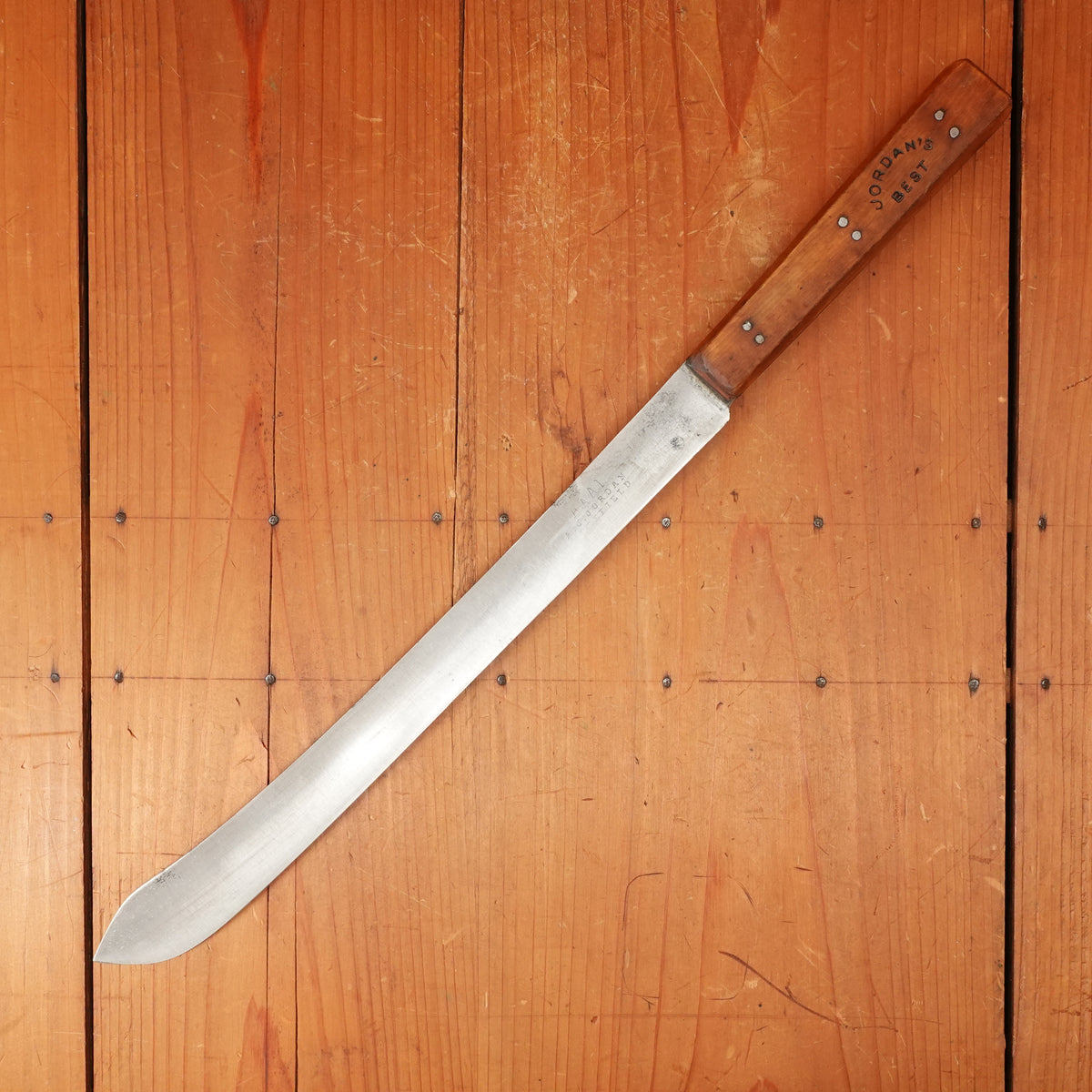
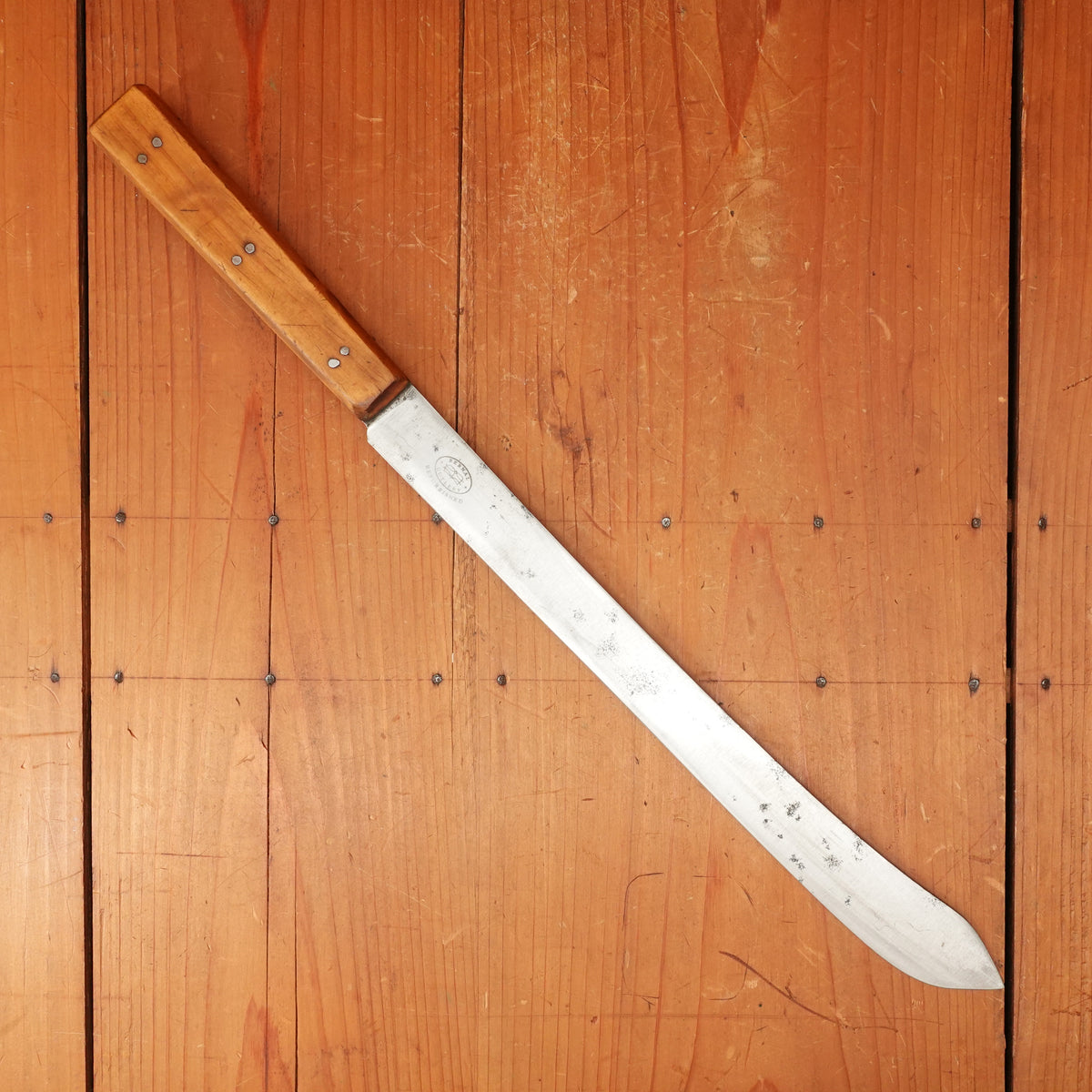
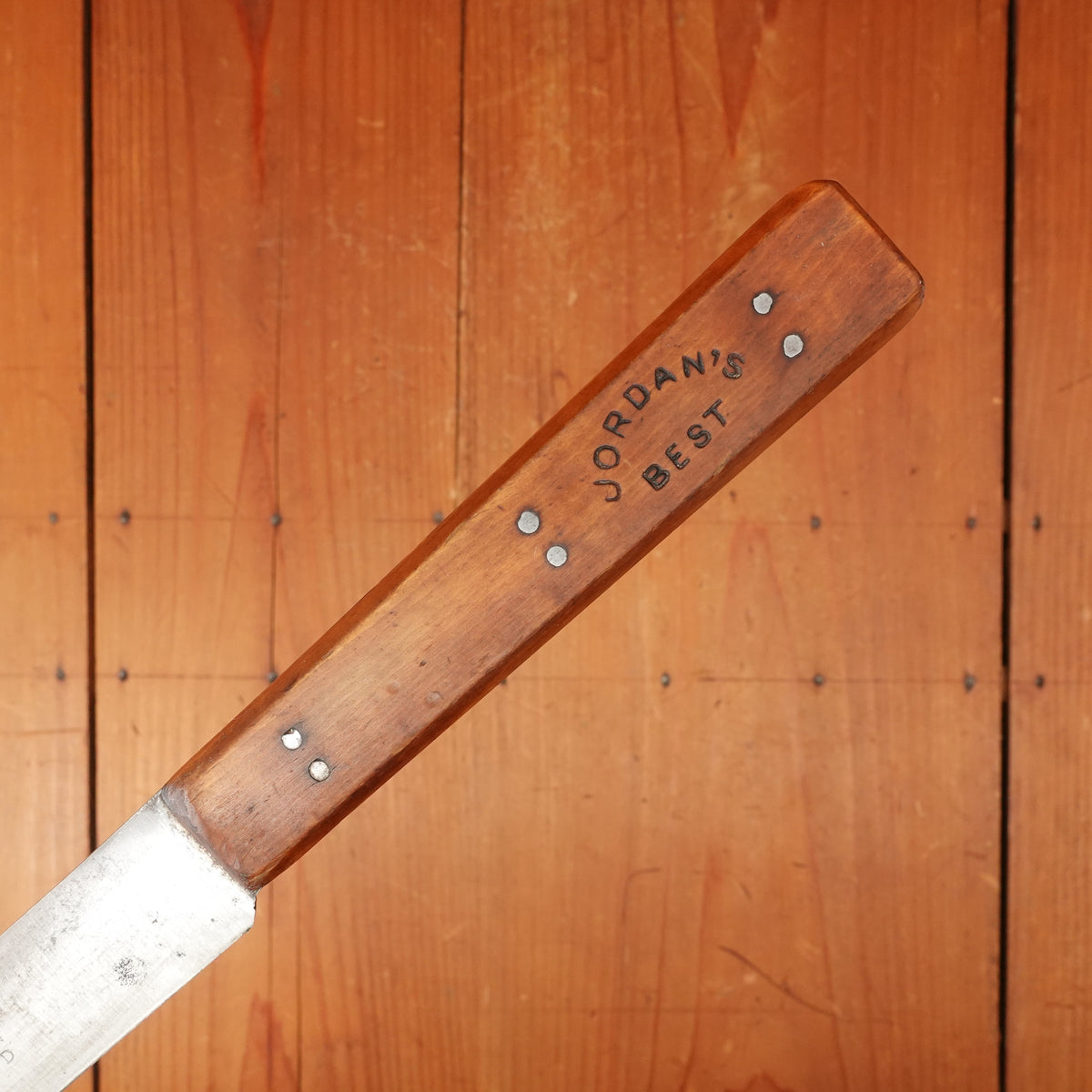
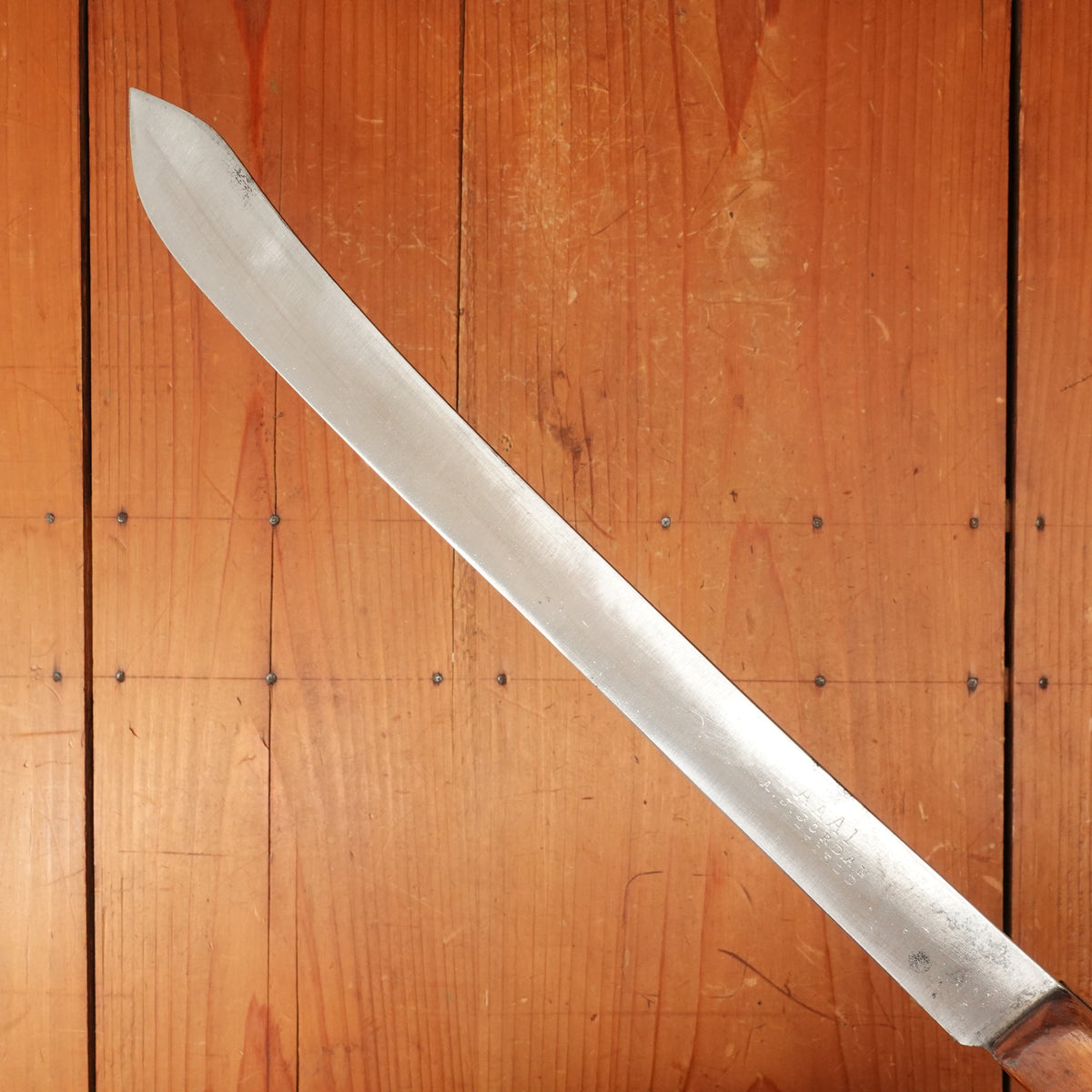
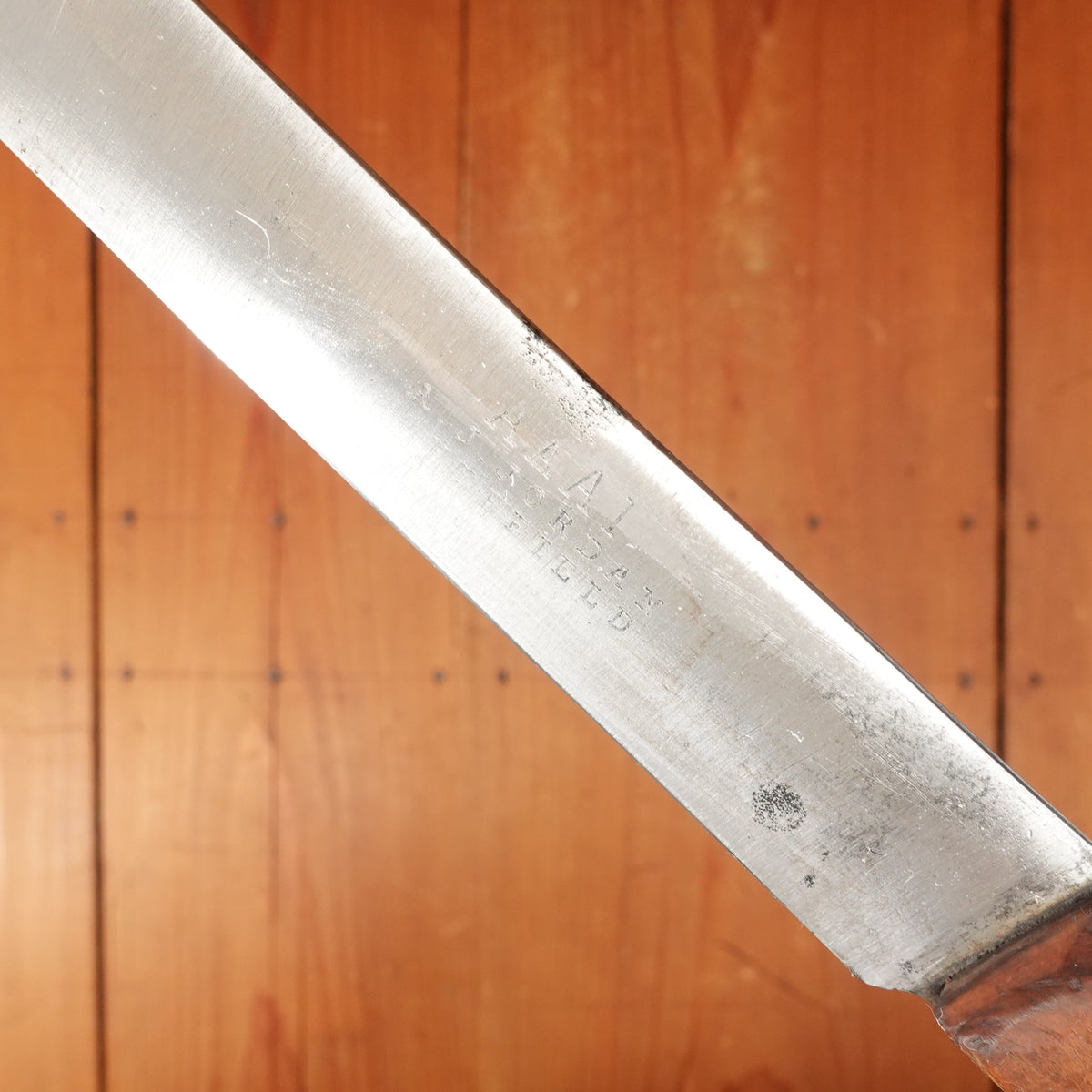
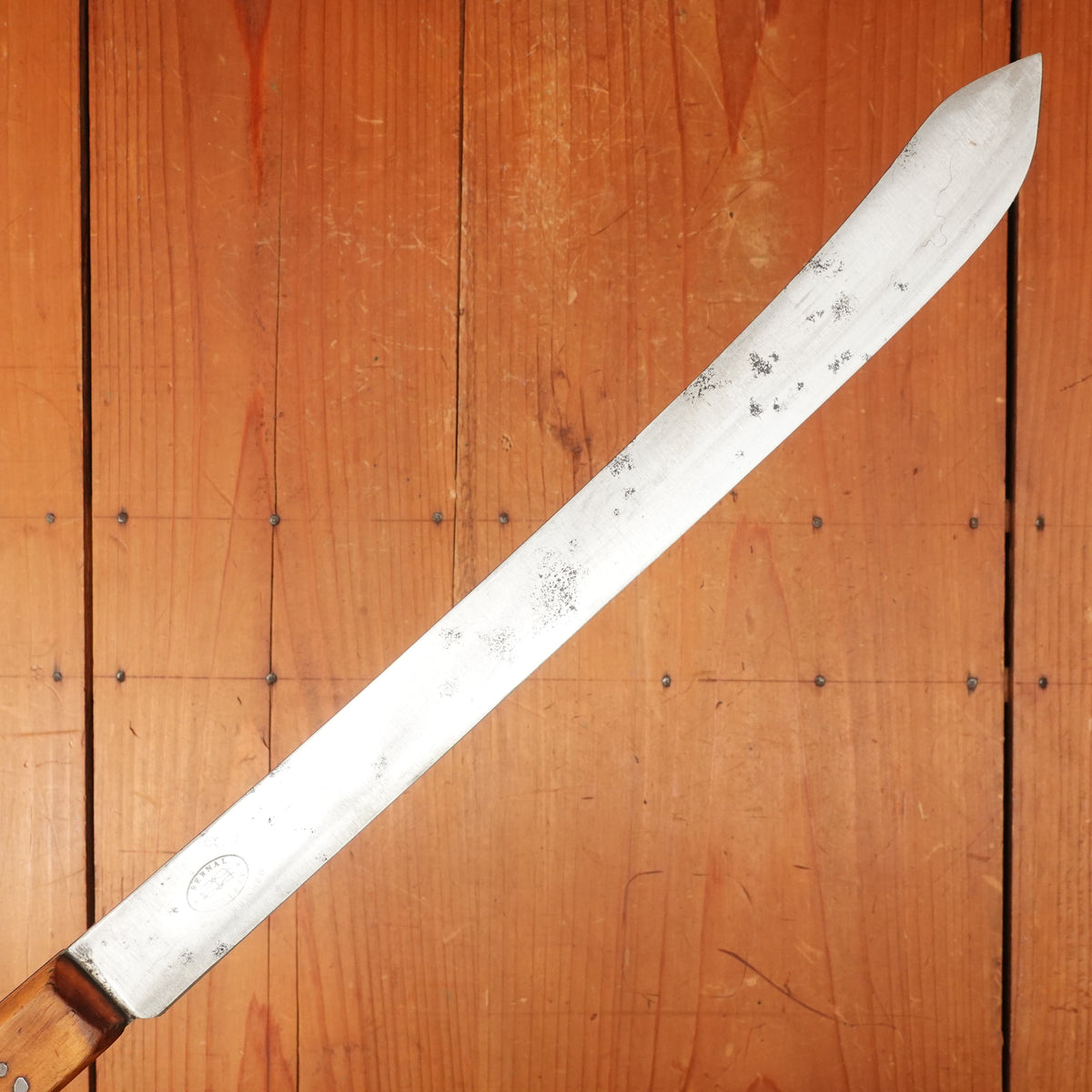
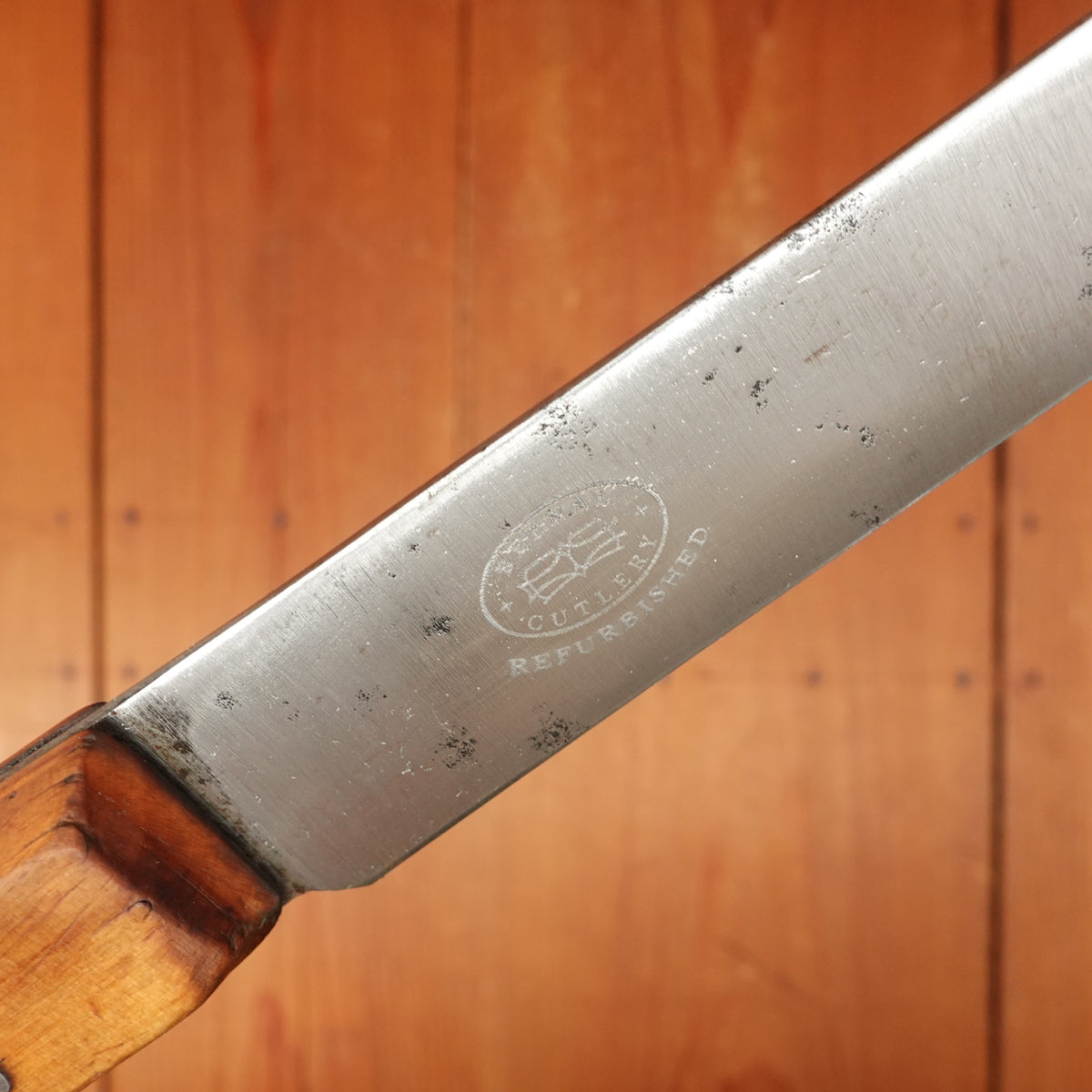
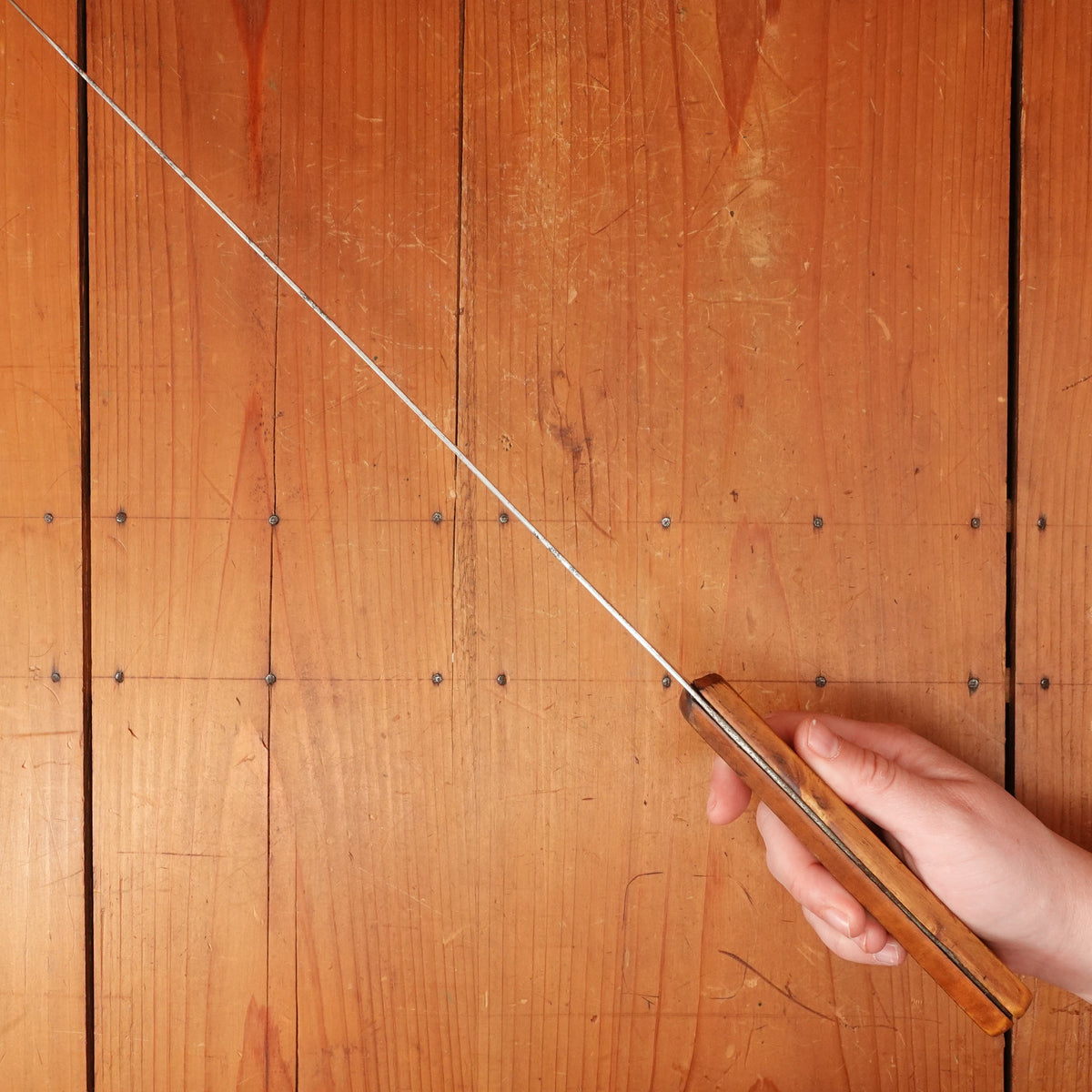
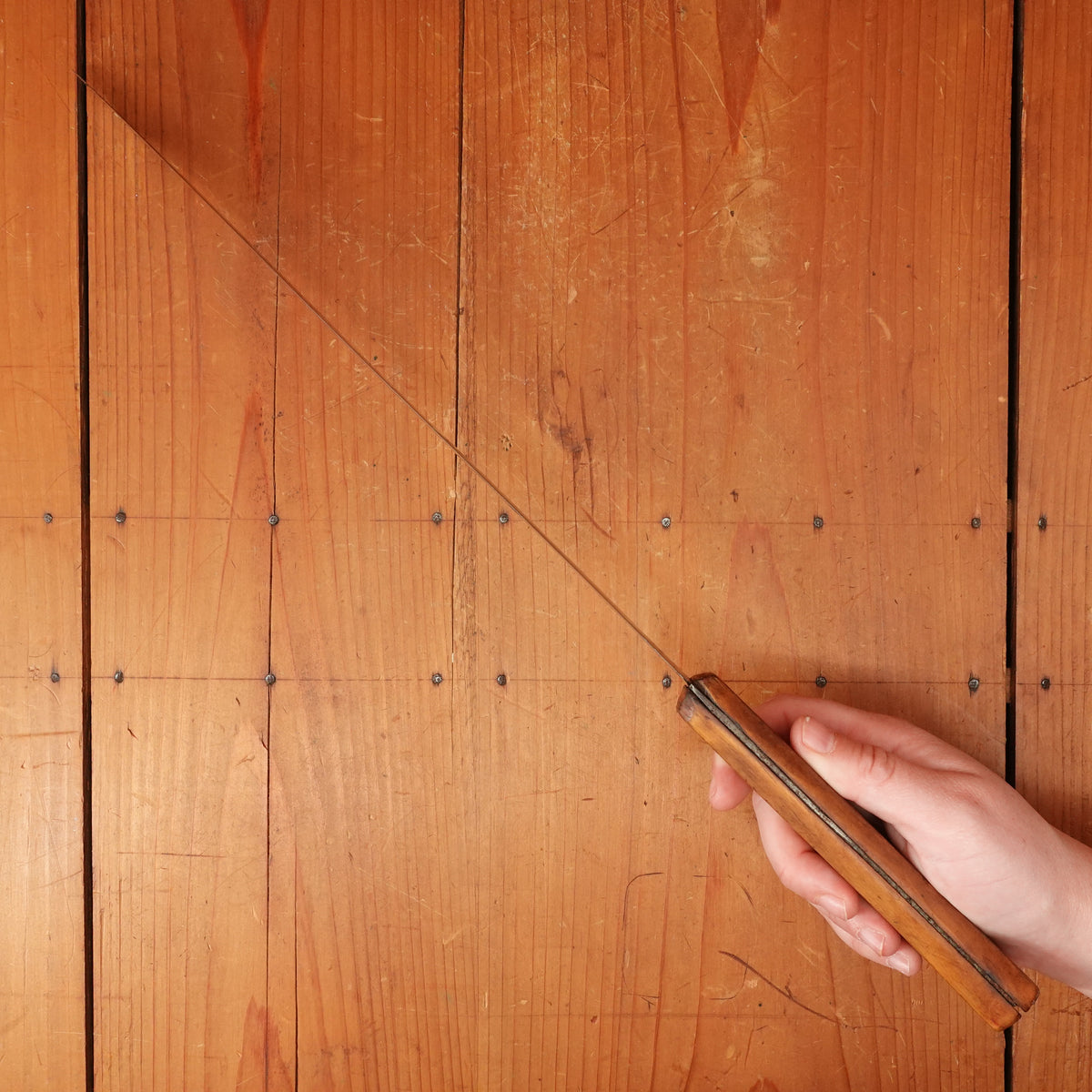
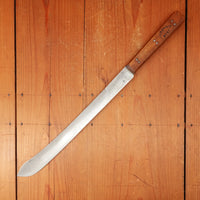
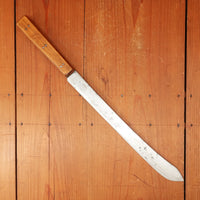
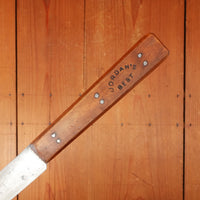
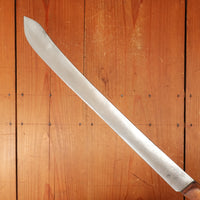
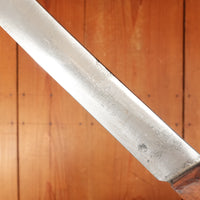
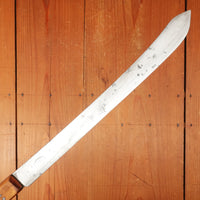
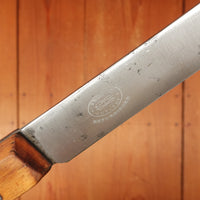

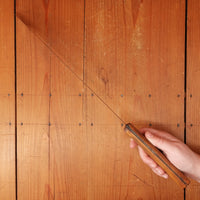
A J Jordan 12" SLIM Bullnose Butcher Hand Forged Double Shear Steel Persian Boxwood 1885-1926
-
Regular Price
-
$309.60
-
Sale Price
-
$309.60
-
Regular Price
-
Sale
Sold Out
-
Unit Price
- /per
- Regular Price
- $309.60
- Sale Price
- $309.60
- Regular Price
- Unit Price
- /per
Marked Jordan's Best on Persian boxwood handle made in Sheffield England (1885-1926), made at the East India Works with Sheffield and made with double shear steel and Persian boxwood. Narrow bullnose like this are uncommon from A J Jordan compared to standard width and weight bullnose butcher knives, so this is a nice find. I suspect it was intended for fish butchery but cannot verify, it is not a wide knife sharpened in, note the smaller size of the handle.
This knife had been sharpened in a bit requiring a thinning, in the process the 'England; in AAA A J Jordan Sheffield England marking on blade has been lost. Dense and hard Persian boxwood handle is in great shape with no gaps or cracks, it has mellowed to a nice warm color and has a great smooth feel.
Andrew Jackson Jordan was an American from St Louis who set up a knife manufacturing business in Sheffield (the East India works) and imported knives to the USA made at the East India Works and on contract for A J Jordan by other Sheffield manufacturers, this is a knife made at the East India Works with double shear steel and 'seasoned Persian boxwood'
Double shear steel was a 19th and early 20th century steel that was made by case hardening bars of iron in ceramic boxes packed with charcoal, large numbers of these were heated for days on end at high temperatures and the resulting bars were broken up (it would break or shear rather than bend once carbon added hence 'shear' steel) and forged welded into a larger mass. This process was done twice on double shear steel creating a steel with a higher carbon content.
This knife has been re-ground and thinned behind the edge on a large 3 foot diameter Japanese water stone wheel (kaiten mizu toishi) and then resurfaced with a medium fine finish, our take on an old style grinding and finishing technique. While the particular wheel used to refurbish this knife is typically used in Japanese knife making it is very similar to the old grinding wheels used to shape European and American hand ground cutlery. A convex face to a blade greatly increases a knife's performance as there is less sticking as there is on a flat face and the blade does not get thick behind the edge nearly as fast as with a flat faced blade. Being that we are often working with old blades that need re-shaping and might have been rusted expect some minor imperfections, we try to give a fresh start to our re-ground blades with an eye towards their original grind style and keeping as much metal is needed on a blade when ever possible.
Recently Viewed
About Bernal Cutlery
We are a full-service cutlery shop offering sharpening services, Japanese and Western culinary knives, vintage knives, outdoor, pocket and craft knives, cooking tools and accessories. We also offer knife skills and sharpening classes, and more.
We are proud to serve kitchen professionals, knife enthusiasts and home cooks alike. Located in the Mission District of San Francisco, California.
766 Valencia Street, SF, CA 94110
1 Ferry Building, Ste. 26, SF, CA 94110
